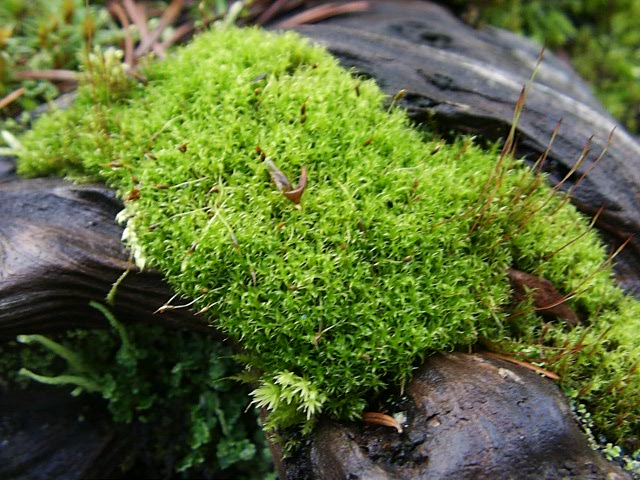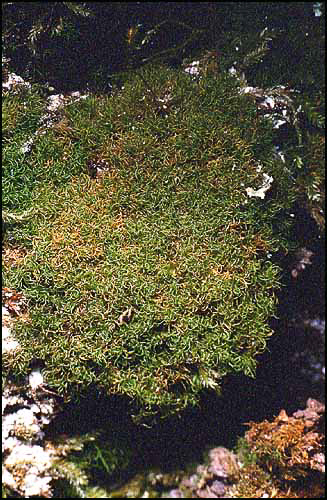
image from: https://www.naturalista.mx/taxa/399498-Amphidium-tortuosum
Exploring the Fascinating World of Amphidium tortuosum Moss
Introduction
Mosses are some of the most ancient and resilient plants on Earth, having evolved over 400 million years ago. One particularly interesting species is Amphidium tortuosum (Hornsch.) Cufod., a moss in the Amphidiaceae

image from: https://www.flickr.com/photos/48126735@N03/21397864958/
family. In this blog post, we’ll take a closer look at this fascinating plant, from its unique morphology to its global distribution and ecological roles. Get ready to dive into the tiny but mighty world of Amphidium tortuosum!
Background on Mosses
Before we focus on A. tortuosum specifically, let’s review some background on mosses in general. Mosses are non-vascular plants in the division Bryophyta. They lack true roots, stems, and leaves, instead having structures that serve similar functions. Mosses reproduce via spores rather than seeds and require water for sexual reproduction. There are over

image from: https://www.flickr.com/photos/48126735@N03/21559495776/
12,000 species of moss found all around the world, from the Arctic to the tropics.
Morphology and Identification
Amphidium tortuosum

image from: https://www.thegardenhelper.com/moss/amphidiumlapponicum.html
is a small moss, typically growing in tufts or cushions. The stems are 0.5-3 cm tall and sparsely branched. Leaves are 1-2.5 mm long

image from: https://www.britishbryologicalsociety.org.uk/event/spring-meeting-2001-tenerife-canary-islands/
, narrowly lanceolate, and strongly crisped and contorted when dry (hence the species name “tortuosum”, meaning twisted). The leaf margins are entire and the costa (midrib) is strong, often extending to the leaf apex.

image from: https://inaturalist.ca/taxa/158305-Amphidium-lapponicum
Capsules are 1-1.5 mm long, erect, and cylindrical. Peristome teeth are absent, which is a key identifying feature of the genus Amphidium. Spores are 8-12 μm in diameter, smooth to finely papillose.
Global Distribution and Habitat

image from: https://moss-wholesale.com/products/carpeting-terrarium-rock-moss-amphidium-mougeotii-with-phytosanitary-certification-and-passport-grown-by-moss-supplier
A. tortuosum has a wide distribution, found in Europe, Asia, Africa, North America, and South America. It typically grows on exposed to shaded, dry to periodically wet, basic rock (especially limestone) in forests, ravines, and on outcrops and cliffs. It is found from lowlands to

image from: https://www.inaturalist.org/taxa/158306-Amphidium-mougeotii
3500 m in elevation.
This moss is able to tolerate long periods of desiccation due to its ability to quickly rehydrate and resume photosynthesis when water becomes available again. The twisting of the leaves when dry also helps reduce water loss.
Ecological Roles and Adaptations

image from: https://www.shutterstock.com/search/kinds-moss
Like other mosses, A. tortuosum plays important ecological roles:
- Helps retain soil moisture and prevent erosion
- Provides habitat for micro-organisms and small invertebrates
- Pioneers the colonization of bare rock surfaces
- Contributes to nutrient cycling and soil formation over time
Its small size and unique adaptations allow it to thrive in harsh, rocky habitats where many other plants cannot grow. The strong, extended costa and entire leaf margins help the plant conserve moisture and maintain structural integrity.
Conclusion
Amphidium tortuosum may be small, but it is a remarkable and resilient moss with a fascinating morphology and ecology. From the limestone cliffs of Europe to the high elevations of South America, this mighty moss quietly plays a vital role in ecosystems around the world.
The next time you’re out in nature, take a closer look at any rocky surfaces – you just might spot the tiny twisted leaves of

image from: https://www.flickr.com/photos/stephenbuchan/5254802640
A. tortuosum! What other mighty mosses have you encountered?